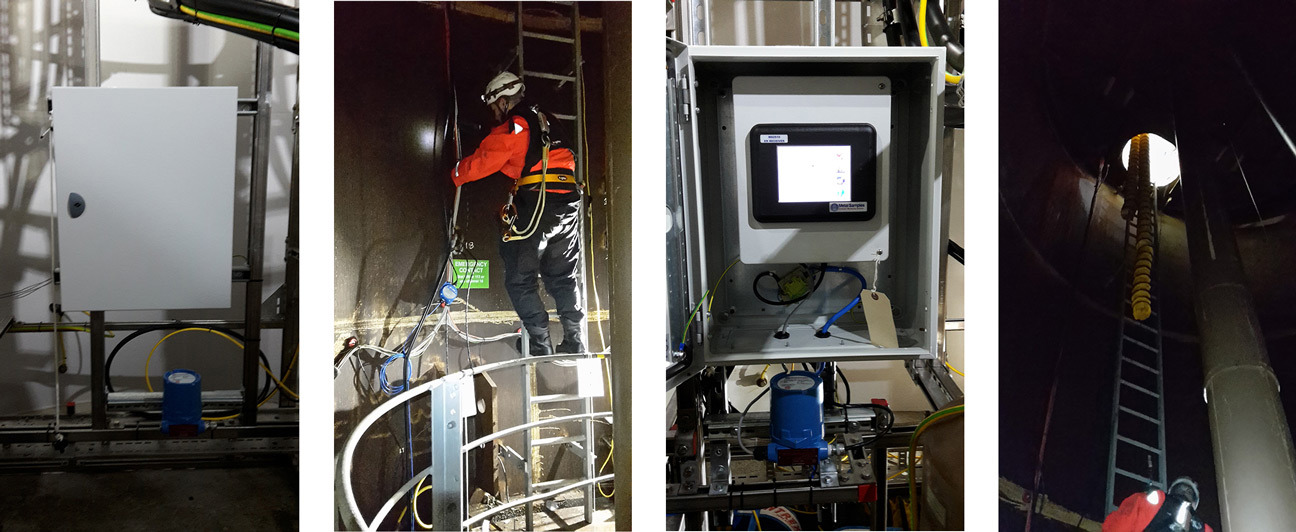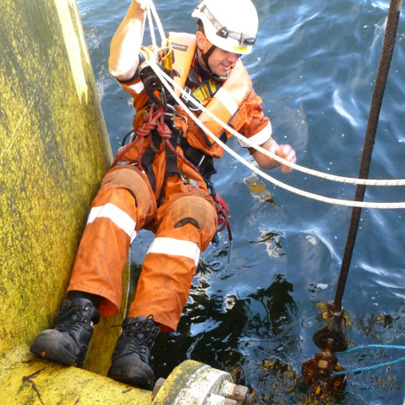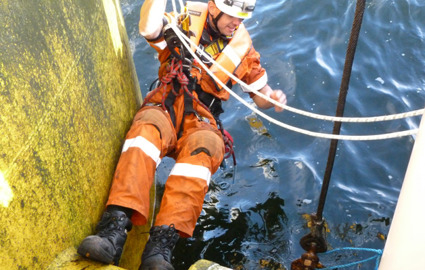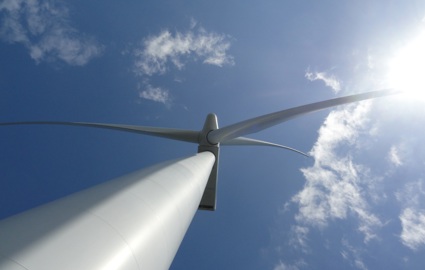LINCS offshore wind monitoring systems
Corrosion monitoring installed on wind monopiles
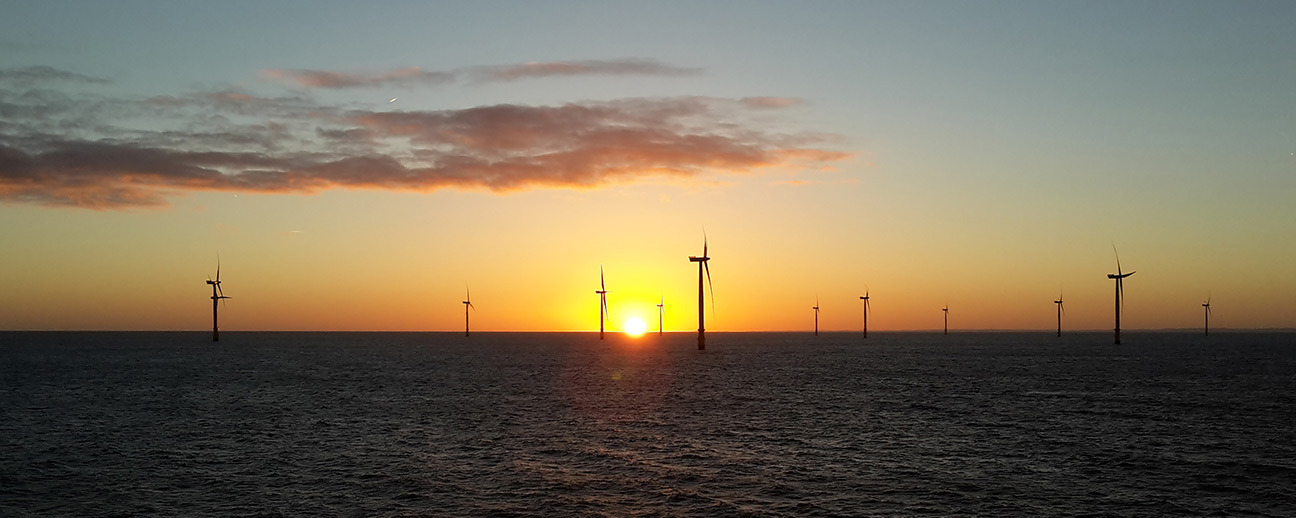
LINCS offshore WTG monopile internal corrosion monitoring system
Deepwater EU Ltd Deepwater installed a long-term corrosion rate monitoring system to ensure that the monopiles of the LINCS offshore wind farm are not being compromised by excessive corrosion, thereby validating the design of the structures.
The LINCS Offshore Wind Farm, completed in 2013, consists of 75 wind turbine generators 8 kilometres off Skegness in the southern North Sea. The wind farm has a projected lifespan of 40 years, with electrical equipment and wind turbines expected to be replaced after 20 years.
There is no coating or cathodic protection system to prevent or reduce corrosion on the internal submerged surfaces of the wind turbine generators’ monopiles; the design relies upon the deoxygenation of the trapped water and air within the sealed structure to reduce corrosion to minimal levels.
The LINCS monopile design limits the number of times that access to the airtight area of the structure can be made to only 20 times over the life of the structure. So, any corrosion monitoring system needs to provide accurate, useful data with long periods of time between retrieval/calibration - approximately 2 years to match the operations and maintenance (O&M) cycle. This limits the types of probes that can be used, as most water quality sensors require regular maintenance and calibration. In addition, at least some of the data must be immediately retrievable for analysis; therefore, a remotely accessible sensor package was required.
Rather than incurring the cost of fitting each monopile with its own monitoring system, a representative sample was chosen to be outfitted.
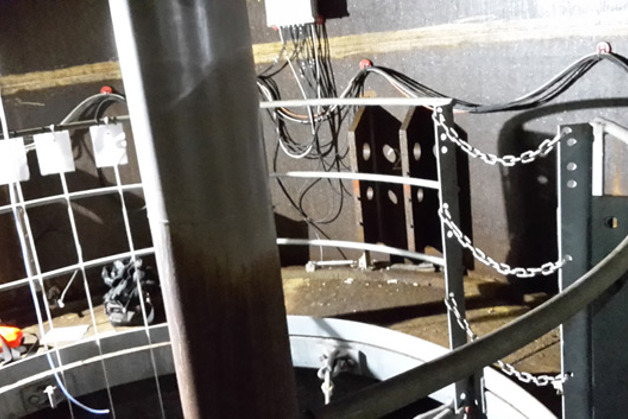
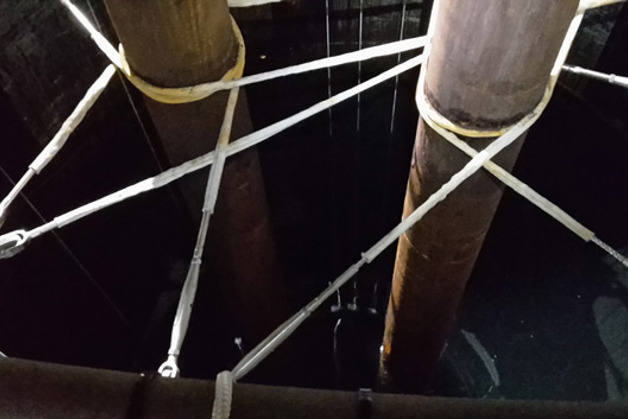
Deepwater installed corrosion coupons on nine wind turbine generators (WTG) in the LINCS offshore wind field. Corrosion coupons are consumable measuring devices which provide accurate, long-term corrosion rate data. Once installed, the corrosion coupons naturally corrode at the same rate as the structure - as they are in the same corrosive environment. Once retrieved, they are weighed to find the material lost due to corrosion over the time that they were installed.
In three of these WTGs, electrical resistance (ER) systems were installed that log data and provide live corrosion information via a touch screen display. As the cross-sectional area of the ER sensor element is reduced due to corrosion, the resistance to current passed through the element goes up. This increase in resistance, when compared to a reference element sealed within the body of the probe, is proportional to the corrosion rate. The ER probe was installed and connected to a data logging system.
The commissioning data collected shows the corrosion coupons were installed correctly and the ER systems were all successfully installed and operating, producing initial readings that fall within the manufacturer’s specifications. Further visits will be required to obtain data collected by the ER systems. It is recommended that the coupons be removed two years after the installation date to be sent for analysis.
